
Robert Smith Candlish was a Scottish minister who was a leading figure in the Disruption of 1843. He served for many years in both St. George's Church and St George's Free Church on Charlotte Square in Edinburgh's New Town.
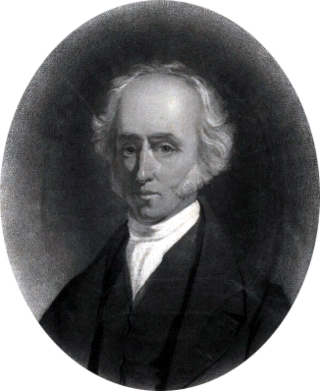
Robert Gordon FRSE was a Scottish minister and author. Originally prominent in the Church of Scotland, and serving as Moderator of the General Assembly in 1841, following the Disruption of 1843 he joined the Free Church of Scotland and became a prominent figure in that church.

William Maxwell Hetherington was a Scottish minister, poet and church historian. He entered the university of Edinburgh but before completing his studies for the church he published, in 1829, 'Twelve Dramatic Sketches' founded on the Pastoral Poetry of Scotland. Hetherington became minister of Torphichen, Linlithgow, in 1836; in 1843 he adhered to the Free Church, and in 1844 was appointed to a charge in St. Andrews. He subsequently became minister of Free St. Paul's, Edinburgh, in 1848; and was appointed professor of apologetics and systematic theology in New College, Glasgow, in 1857. He died 23 May 1865.
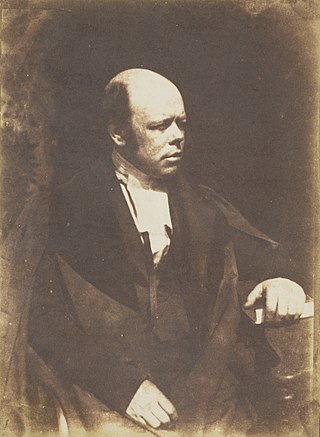
Andrew Gray, was a Scottish presbyterian divine.

Alexander Colquhoun-Stirling-Murray-Dunlop was a Scottish church advocate and Liberal Party politician. He was the Member of Parliament (MP) for Greenock from 1852 to 1868. He was a very influential figure in the Disruption of 1843 which led to the formation of the Free Church of Scotland. For that denomination he drafted the Church-State papers: the Claim of Right and the Protest. He became known by the nickname the Member for Scotland.

Alexander Beith (1799–1891) was a Scottish divine and author who served as Moderator of the General Assembly of the Free Church of Scotland 1858/59.
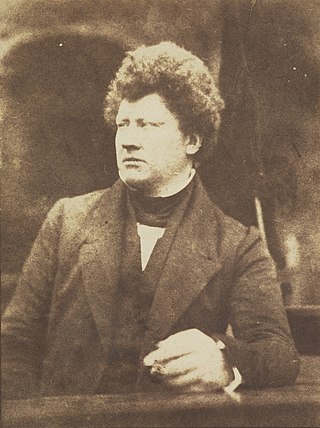
William Cunningham was a Scottish theologian and co-founder of the Free Church of Scotland. He was Moderator of the Free Church in 1859.

Angus Makellar (1780–1859) was a Scottish minister of the Church of Scotland who served as Moderator of the General Assembly of the Church of Scotland in 1840. Leaving in the Disruption of 1843 he also served as Moderator of the General Assembly of the Free Church of Scotland in 1852.

Robert Cunningham Graham Speirs or Spiers FRSE (1797–1847) was a 19th-century Scottish advocate and prison reformer. In later life he is largely referred to simply as Graham Speirs. He held the offices of Sheriff of Elgin and Moray from 1835 to 1840 and subsequently was Sheriff of Midlothian from 1840 until his death in 1847. He joined the Free Church at the Disruption of 1843. He was then involved in the Sites Committee trying to persuade landowners to allow the denomination to build churches and schools on their land.
William Laughton was a Scottish minister of the Free Church of Scotland who served as Moderator of the General Assembly to the Free Church 1881/82.
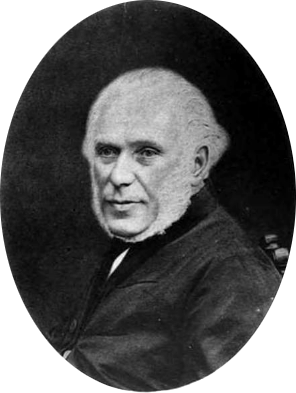
Roderick McLeod (1794–1868) was a Scottish minister of the Free Church of Scotland who served as Moderator of the General Assembly 1863/64.
William Nixon (1803–1900) was a Scottish minister of the Free Church of Scotland who served as Moderator of the General Assembly in 1868/69. In Montrose he was nicknamed the "Lion of St John's".

William Wilson was a Scottish minister of the Free Church of Scotland who served as Moderator of the General Assembly in 1866/67.
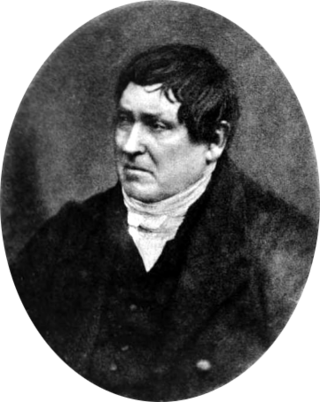
John Macdonald (1779–1849) was a Scottish minister known in Scotland as the Apostle of the North. He is also remembered for his visits and descriptions of life on St Kilda.

George Buchan was a civil servant who was shipwrecked on his first passage to India as a teenager. Born into an elite family, his career progressed in the Indian Civil Service rising to the rank of Chief Secretary. After retiral he came home to Scotland and had a Christian conversion. After several years as an elder in the Church of Scotland, he left at the Disruption and joined the Free Church of Scotland. He was an author writing about shipwrecks, Madras and about duelling as well as about church-state relations. He also wrote about God's providence illustrated from his own biography. Buchan was also an office bearer for a number of charity organisations.

David Maitland Makgill Crichton was a Scottish lawyer who inherited his father's estate at Nether Rankeilour in Fife to become a country gentleman. He played an important role in the formation of the Free Church of Scotland and consequently was photographed by Hill & Adamson. He organised a local committee to start the Fife Sentinel newspaper. Following his death a memoir of his life was published, written by J. W. Taylor, a Free Church minister from Fife. His statue overlooks the South Bridge in Cupar.
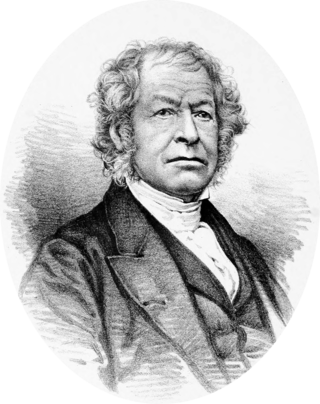
James Gibson was a Church of Scotland and Free Church minister. He worked in Glasgow. He engaged in the Voluntary Controversy on the side of the Establishment. He edited the Church of Scotland Magazine, from 1834 to 1837. Kingston church in Glasgow was built for him by William Campbell and other anti-voluntaries, in 1839. He joined the Free Church at the Disruption, in 1843. On the endowment of Glasgow Theological College by Dr. Clark of Wester Moffat, Dr. Gibson was nominated Professor of Church History and Systematic Theology. He offended a portion of his students by the expression of views on moral inability consequent on the Fall. He was an author, publishing "Present Truths in Theology", and many pamphlets and sermons on theological topics which were current at the time.

Alexander Earle Monteith trained as a lawyer in Edinburgh and became Sheriff of Fife in 1838. He is remembered as one of the Disruption Worthies - those church leaders who, at the Disruption of 1843, left to set up the Free Church of Scotland. Monteith was an active member of many commissions involved in reforming Aberdeen University, prisons and treatment of those then called lunatics for example. Monteith was also photographed by Hill & Adamson and by his second wife, Frances, who herself was an early pioneer of calotype photography and some of whose pictures ended up in an album by David Brewster.

Robert Paul was born at St. Cuthbert's Manse, 15 May 1788. He was educated at the High School and University of Edinburgh. He subsequently entered the Bank of Ramsay, Bonar and Company, Edinburgh, in 1807. Paul was appointed first Accountant to the Commercial Bank of Scotland, which commenced business in Picardy Place, Edinburgh, in 1810 ; Secretary of the Bank 31 July 1823, and Manager 17 December 1835, which office he held till he retired in December 1853. He then became a Director of the Bank, and continued to be so till his death, which took place at Kirkland Lodge, Hermiston, near Edinburgh, 16 July 1866. A memoir of him was written by his old friend Benjamin Bell, in 1872. He is remembered for his place in the history of Scottish banking and as an influential elder in the lead up to, and the early days of, the Free Church of Scotland. He was the sitter in portraits by Hill & Adamson and by John Watson Gordon.
Alexander Stewart was born at the manse in Moulin, Perthshire, on 25 September 1794. He was the son of Alexander Stewart, minister of Canongate, Edinburgh. He was educated at King's College, Aberdeen, and the University of Glasgow. He was ordained to the Chapel-of-Ease, Rothesay, on 10 February 1824 and later translated, and admitted to Cromarty on 23 September 1824. He joined the Free Church in 1843. He continued as the minister of the Free Church, Cromarty, from 1843 to 1847. He was elected to Free St George's, Edinburgh, but died before the induction, on 5 November 1847, of a fever. He was reckoned one of the most eminent preachers in the Church. Hugh Miller wrote warmly of him.




















